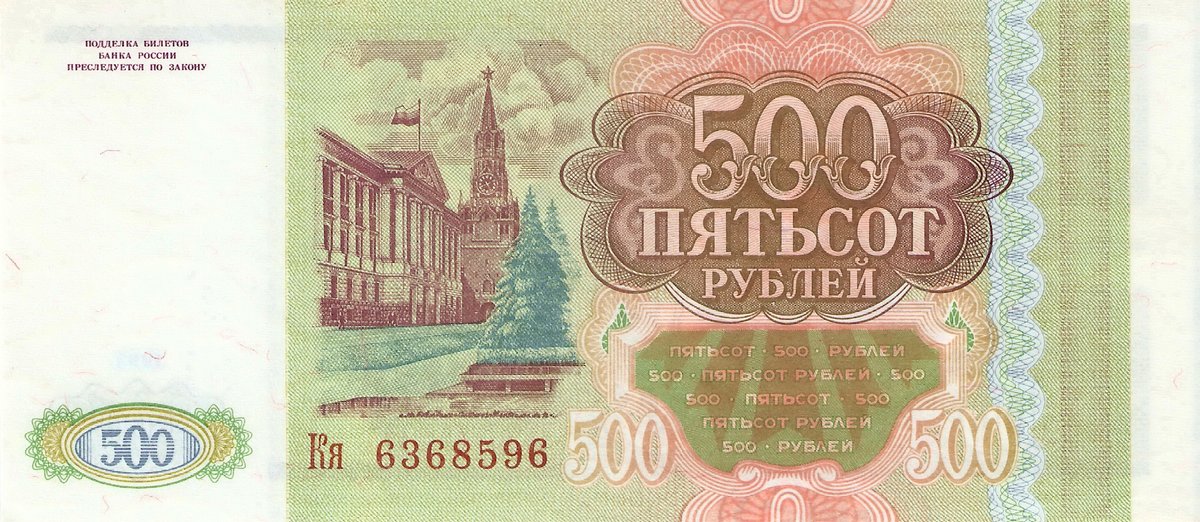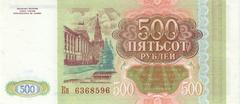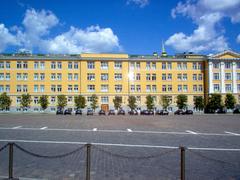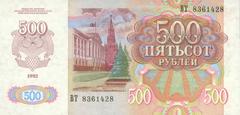
Kremlin Presidium Visiting Hours, Tickets, and Moscow Historical Sites Guide
Date: 14/06/2025
Introduction
The Kremlin Presidium, once a prominent administrative building within Moscow’s Kremlin complex, serves as a window into Russia’s turbulent 20th-century history. Erected in the 1930s on the site of demolished medieval monasteries, the Presidium was a symbol of Soviet authority and secularization. Although the building was demolished in 2016 to restore the Kremlin’s historical landscape, its story remains a vital part of understanding the evolution of Russian state power and architectural heritage. This in-depth guide explores the site’s history, architectural features, visiting hours, ticketing, accessibility, and tips for making the most of your visit to the Moscow Kremlin and surrounding attractions (Britannica, kremlin-architectural-ensemble.kreml.ru, Museumsexplorer).
Table of Contents
- Introduction
- Historical Evolution of the Kremlin Presidium
- Architectural and Political Significance
- Visiting the Kremlin Presidium Site
- Frequently Asked Questions (FAQ)
- Visual Gallery and Media Resources
- Conclusion
- References
Historical Evolution of the Kremlin Presidium
Medieval Origins and Demolition
The site of the Kremlin Presidium holds deep historical roots, originally occupied by the Chudov Monastery (founded in 1365) and the Ascension Convent (founded in 1389). These religious institutions were central to medieval Moscow’s spiritual and cultural life (Britannica). Following the 1917 Russian Revolution, the Bolshevik regime’s campaign of secularization led to the demolition of these historic landmarks, reflecting a decisive shift from religious to state power (kremlin-architectural-ensemble.kreml.ru).
Construction and Soviet Era Significance
Constructed in 1934 under architect Ivan Rerberg, the Kremlin Presidium embodied Soviet functionalism—stark, practical, and in sharp contrast to the ornate cathedrals and palaces nearby. It housed the Supreme Soviet, the Soviet Union’s highest legislative body, and later the Russian Presidential Administration. Its imposing, minimalist style symbolized the transformation of the Kremlin from a royal and religious citadel into the political epicenter of Soviet and Russian power (Britannica).
The Presidium was among the most secure and restricted structures in the Kremlin, underscoring its administrative importance. During World War II, the Kremlin and Presidium were camouflaged to avoid bombing raids, highlighting their strategic significance.
Post-Soviet Era and Demolition
After the collapse of the Soviet Union, the Presidium continued to serve administrative functions but was often criticized for disrupting the Kremlin’s historical aesthetic (kremlin-architectural-ensemble.kreml.ru). In 2016, the building was dismantled as part of a broader effort to restore the Kremlin’s pre-revolutionary appearance and potentially reconstruct lost religious monuments. The decision sparked debate over heritage preservation and Russia’s evolving identity.
Architectural and Political Significance
The Kremlin Presidium was a four-story structure with three wings facing the Senate and a Neoclassical southern façade with Ionic columns. Its utilitarian design, painted yellow to blend with other Kremlin buildings, was a marked departure from the intricate detail of the structures it replaced. Despite its lack of ornamentation, the Presidium’s presence highlighted the shift from religious and monarchical authority to secular, centralized governance.
The Kremlin complex, including the former site of the Presidium, is a UNESCO World Heritage Site, recognized for its universal cultural and historical value (kremlin-architectural-ensemble.kreml.ru). The removal of the Presidium is a significant chapter in the Kremlin’s ongoing narrative as a living monument.
Visiting the Kremlin Presidium Site
Visiting Hours and Access
While the Kremlin Presidium no longer stands, its former site is included in the visitor route within the Kremlin complex. The Kremlin is generally open daily from 10:00 AM to 5:00 PM, with the last admission one hour before closing, and is closed on Thursdays (audiala.com). Visitors enter through the Kutafiya Tower or Borovitskaya Tower and can view the site from designated areas, particularly near the Tsar Bell and Taynitskaya Garden.
For updated hours and possible closures during official events, check the official Kremlin website.
Kremlin Tickets and Guided Tours
Tickets are required to enter the Kremlin grounds and its attractions. Purchase options include:
- Cathedral Square Ticket: Access to Sobornaya Ploschad and its cathedrals.
- Ivan the Great Bell Tower Ticket: Entry to the bell tower and Cathedral Square.
- Armoury Chamber Ticket: Timed entry to the Armoury Museum.
- Special Exhibition Tickets: For temporary exhibits (Museumsexplorer).
Prices (2025):
- Armoury Chamber: 1,200 rubles
- Cathedral Square: 800 rubles
- Children under 16: discounted; under 7: free
Tickets can be purchased online via the Kremlin Museums official website or at ticket offices near the entrance. Advance booking is recommended, especially in summer and on holidays.
Guided Tours:
Guided tours are available for groups and private parties, lasting 1.5–2 hours, and provide expert insight into the Kremlin’s history and architecture. Specialized tours on Soviet history or architecture may be arranged (Museumsexplorer).
Accessibility and Visitor Services
The Kremlin complex is largely accessible for wheelchair users, with ramps at entrances and accessible restrooms (mos-tour.moscow). Some historic buildings, including most cathedrals, have limited access, but the Assumption Cathedral offers step-free entry with assistance.
For visitors with visual or hearing impairments, tactile and audio aids are available at the ticket office. Assistance can be requested via special call buttons at main entrances. Contact visitor services in advance for tailored support (mos-tour.moscow).
Security, Dress Code, and Entry Procedures
Security:
All visitors undergo security checks, including bag inspection and metal detectors. Large bags, backpacks, and prohibited items (e.g., weapons, scooters) must be stored at the facility in Alexander Garden (mos-tour.moscow).
Dress Code:
Modest attire is required, especially for cathedral visits—women should cover their heads, and men must remove hats (mos-tour.moscow).
Conduct:
Respectful behavior is expected, and food, drinks, and disruptive items are not allowed.
Tips for a Smooth Visit
- Book tickets online to skip queues (Museumsexplorer).
- Arrive early or late afternoon for fewer crowds.
- Follow marked tourist routes; restricted zones are enforced by security.
- Photography is allowed outdoors but restricted inside museums and cathedrals.
- Combine your Kremlin visit with Red Square, St. Basil’s Cathedral, and Alexander Garden for a complete Moscow experience.
Nearby Attractions
The Kremlin is surrounded by some of Moscow’s most famous sites:
- Red Square and Saint Basil’s Cathedral: Iconic landmarks directly adjacent.
- State Historical Museum: Russian history exhibits.
- Alexander Garden: Landscaped park with monuments and entrances to the Kremlin.
- GUM Department Store: Historic shopping arcade.
For more, consult travelallrussia.com.
Frequently Asked Questions (FAQ)
Q: Can I visit the Kremlin Presidium building?
A: The Presidium was demolished in 2016 and is not open to the public, but its site is visible from within the Kremlin grounds.
Q: What are the Kremlin’s visiting hours?
A: Open 10:00 AM–5:00 PM daily, except Thursdays. Last admission is one hour before closing.
Q: How do I buy tickets for the Kremlin?
A: Tickets are available online (Kremlin Museums official website) or at ticket offices near the entrance.
Q: Are guided tours available?
A: Yes, in multiple languages, covering the Kremlin’s history and key sights, including the former Presidium site.
Q: Is the Kremlin accessible for visitors with disabilities?
A: Most grounds and some buildings offer step-free access; contact visitor services for specific needs (mos-tour.moscow).
Q: Can I take photos inside the Kremlin?
A: Photography is permitted outdoors; restrictions apply indoors and in certain exhibits.
Q: Are service animals allowed?
A: Yes, with proper documentation.
Visual Gallery and Media Resources
- Kremlin Presidium site (alt text: “Former site of the Kremlin Presidium within the Moscow Kremlin”)
- Cathedral Square (alt text: “Panoramic view of Cathedral Square in the Moscow Kremlin”)
- Kutafiya Tower entrance (alt text: “Main visitor entrance to the Kremlin complex”)
- Ivan the Great Bell Tower (alt text: “Ivan the Great Bell Tower, Moscow Kremlin”)
- Armoury Chamber entrance (alt text: “Entrance to the Armoury Chamber Museum”)
Visit the Kremlin Museums website for virtual tours and downloadable maps.
Conclusion
The story of the Kremlin Presidium reflects Russia’s evolving relationship with history, power, and heritage. While the building itself no longer stands, its legacy is woven into the fabric of the Kremlin, offering visitors a unique perspective on Moscow’s layered past. By planning ahead—understanding ticketing, visiting hours, accessibility, and etiquette—you can enjoy a smooth and enriching visit. Enhance your experience by exploring surrounding landmarks and engaging with official resources and guided tours.
For the latest updates, tickets, and travel tips, download the Audiala app, explore related Moscow historical site guides, and follow us on social media.
References
- The Kremlin, Britannica, 2025
- Kremlin Architectural Ensemble History, 2025
- Museumsexplorer: How Can I Book a Guided Tour of the Kremlin in Moscow? 2025
- Audiala: Kremlin Presidium Historical Site Information, 2025
- Official Kremlin Museums Website, 2025
- Mos-tour.moscow – Kremlin accessibility and visitor rules
- Travel All Russia – Moscow Kremlin























































































































































































































































































